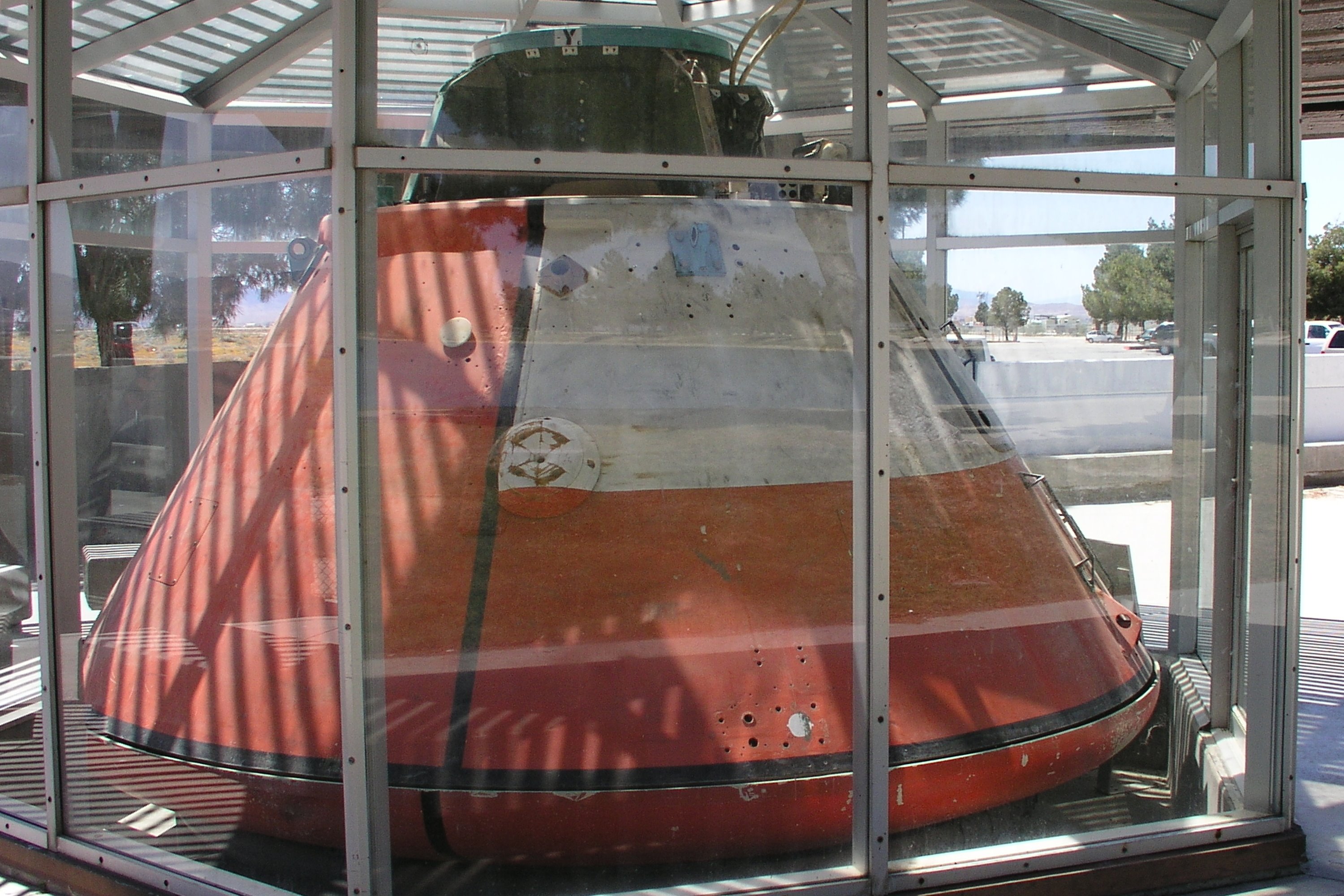
| ||||
|---|---|---|---|---|
 |
 |
 |
 |
 |



























| ||||
|---|---|---|---|---|
 |
 |
 |
 |
 |


























Apollo BP-19 Boilerplate Spacecraft Test Unit
Apollo Moon Project Test Unit

Archive Photos 1
Apollo Boilerplate BP-19A, on display 4/20/2005 at the Apollo County Park, Fox Field, Lancaster, CA (John Shupek photos copyright © 2005 Skytamer Images)
Apollo BP-19 Boilerplate 2
The term boilerplate in rocketry refers to a nonfunctional craft, system, or payload which is used to test various configurations and basic size, load, and handling characteristics. It is far less expensive to build multiple, full-scale, non-functional boilerplate spacecraft than it is to develop the full system (design, test, redesign, and launch). In this way, boilerplate spacecraft allow components and aspects of cutting-edge aerospace projects to be tested while detailed contracts for the final project are being negotiated. During these tests, procedures are developed in mating boilerplates to rocket boosters along with emergency access and egress, maintenance support activities, and various transportation processes.
Boilerplate spacecraft are most commonly used to test manned spacecraft; for example, in the early 1960s, NASA performed many tests of boilerplates. Such boilerplates were made for Apollo spacecraft atop Saturn I rockets, and Mercury spacecraft atop Atlas rockets.
NASA created a variety of Apollo boilerplates. A list of them can be found in Apollo Section of A Field Guide to American Spacecraft.
Launch Escape System Tests (LES) 2
Apollo boilerplates were used in the Launch Escape System (LES) for tests of the jettison tower rockets and procedures:
Boilerplate Tests 2
Specific Apollo BP Units 2
BP-1101A
BP-1101A was used in numerous tests to develop spacecraft recovery equipment and procedures. Specifically, 1101A tested the air bags as part of the "up-righting" procedure when the Apollo lands upside down in the water. The sequence of the bags inflating caused the capsule to roll and up-right itself. This McDonnell boilerplate is now on loan to the Wings Over the Rockies Air and Space Museum, Denver, Colorado, from the Smithsonian. BP-1101A has an external painted marking of AP.5. Examination of the interior in 2006 revealed large heavy steel ingots. After further research, a new paint scheme was applied in June 2007.
BP-1220/1228 Series
The purpose of this series design was to simulate the weight and other external physical characteristics of the Apollo command module. These prototypes were in the 9000 lb range for both laboratory water tanks and ocean tests. The experiments tested floatation collars, collar installations, and buoyancy characteristics. The Navy trained their recovery personnel for ocean collar installation and shipboard retrieval procedures. These boilerplates rarely had internal equipment.
BP-1224
This unit was a Component level Flammability Test Program to test for design decisions on selection and application of nonmetallic materials. Boilerplate configuration comparisons with Command Service Module 2TV-1 and 101 were performed by North American. The NASA Review Board decided on February 5, 1967, that the boilerplate configuration had determined a reasonable "worst case" configuration, after more than 1,000 tests were performed. This was recovered in the Arctic and is now located in Grand Rapids, Michigan as a time capsule.
References